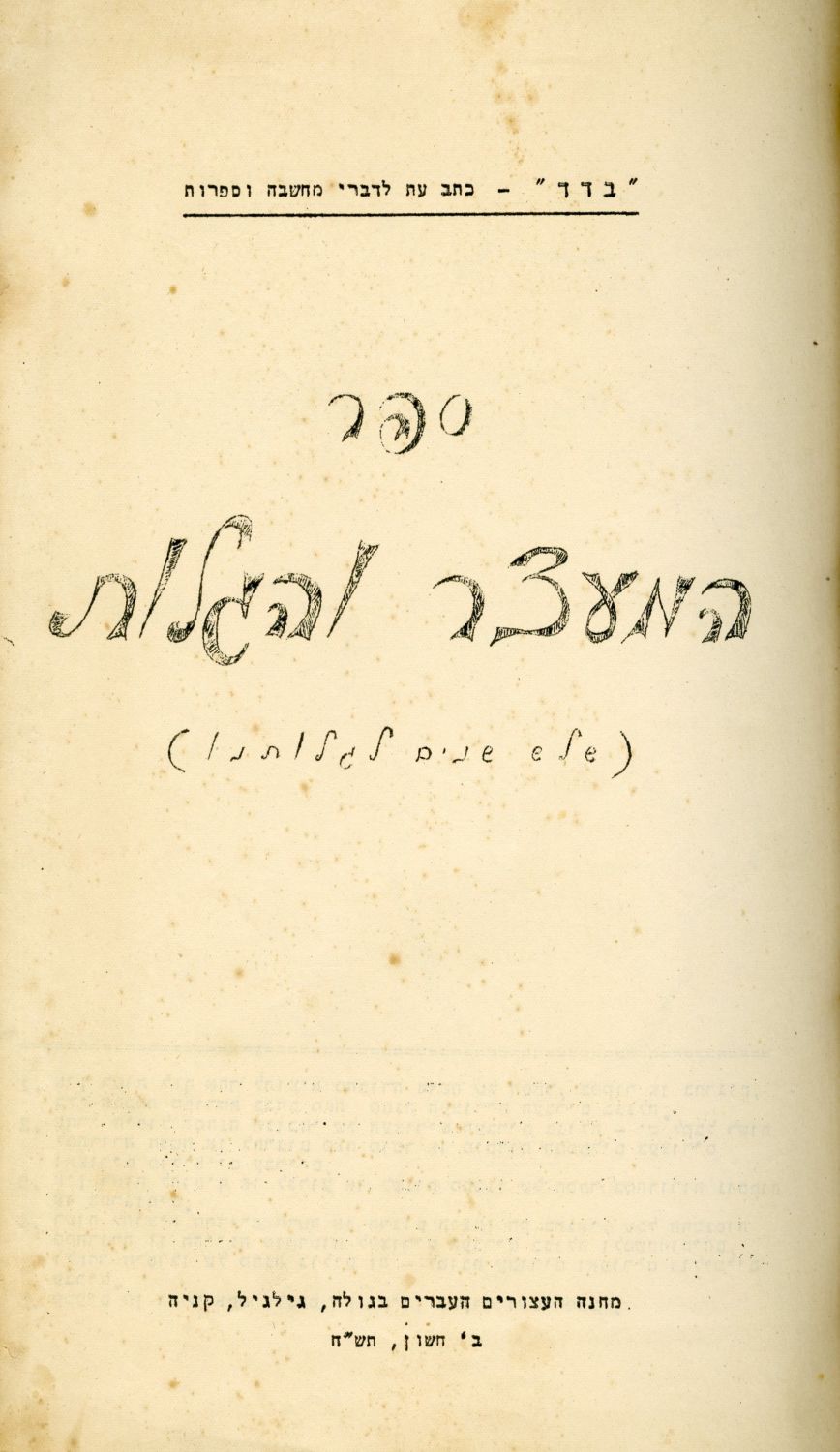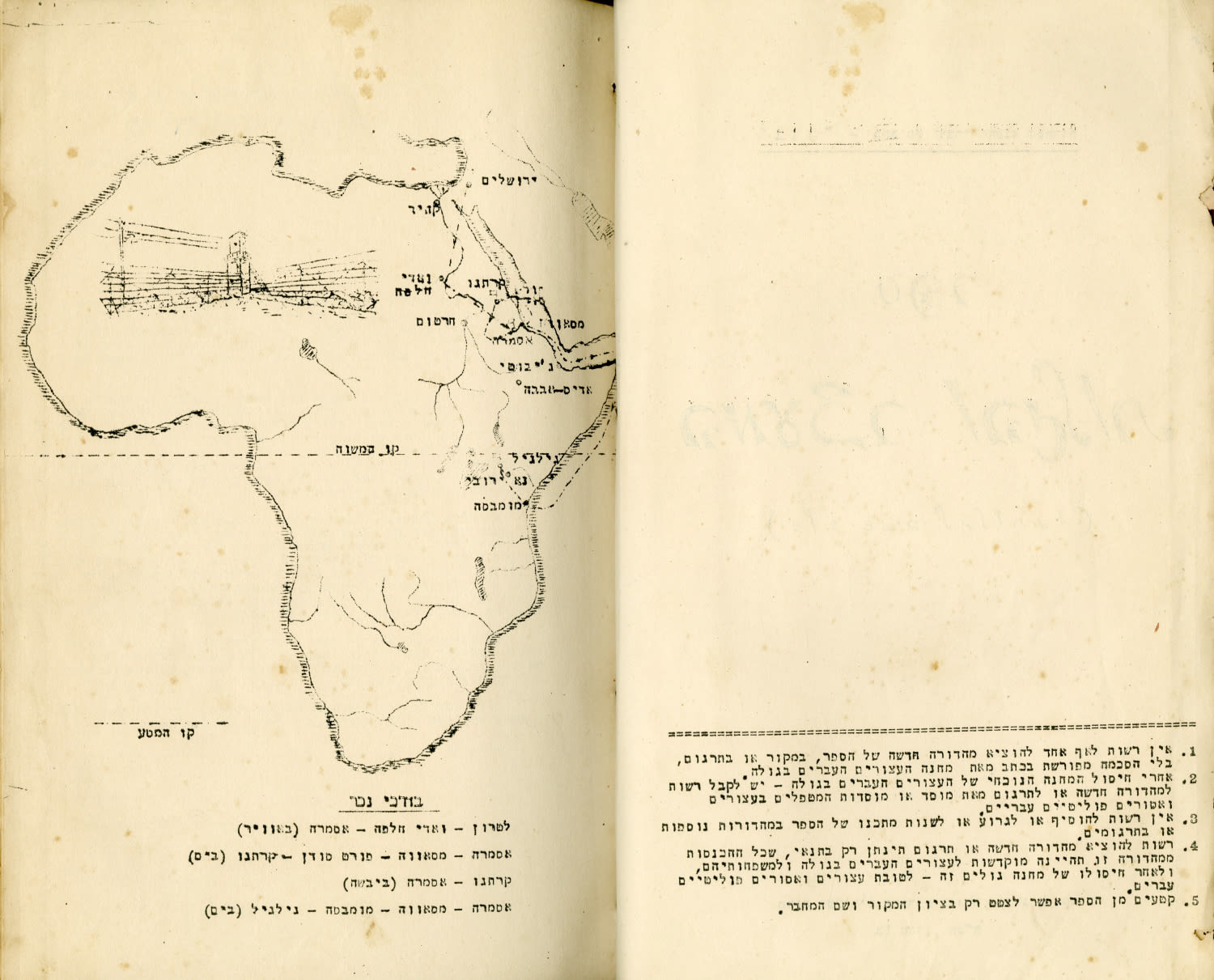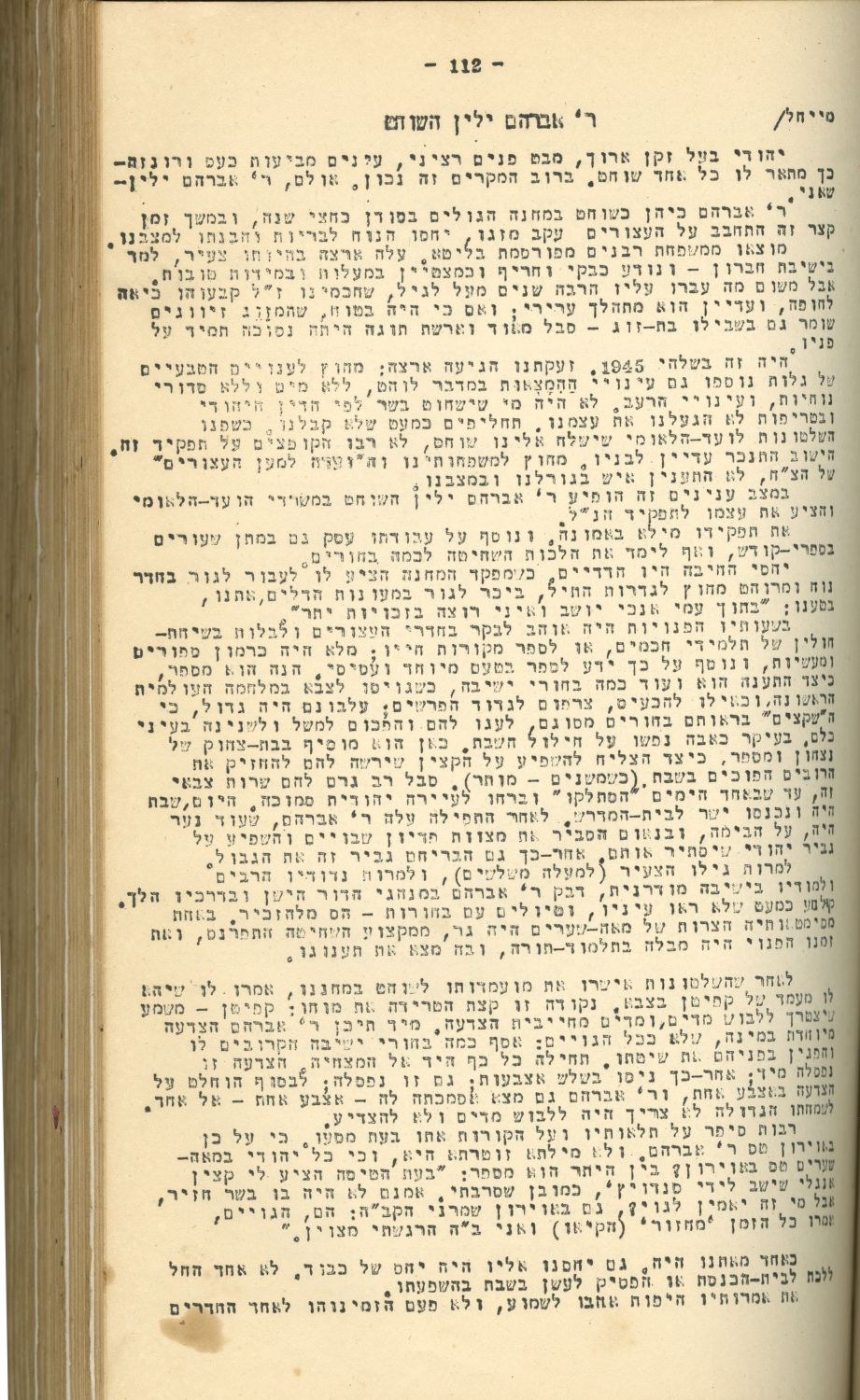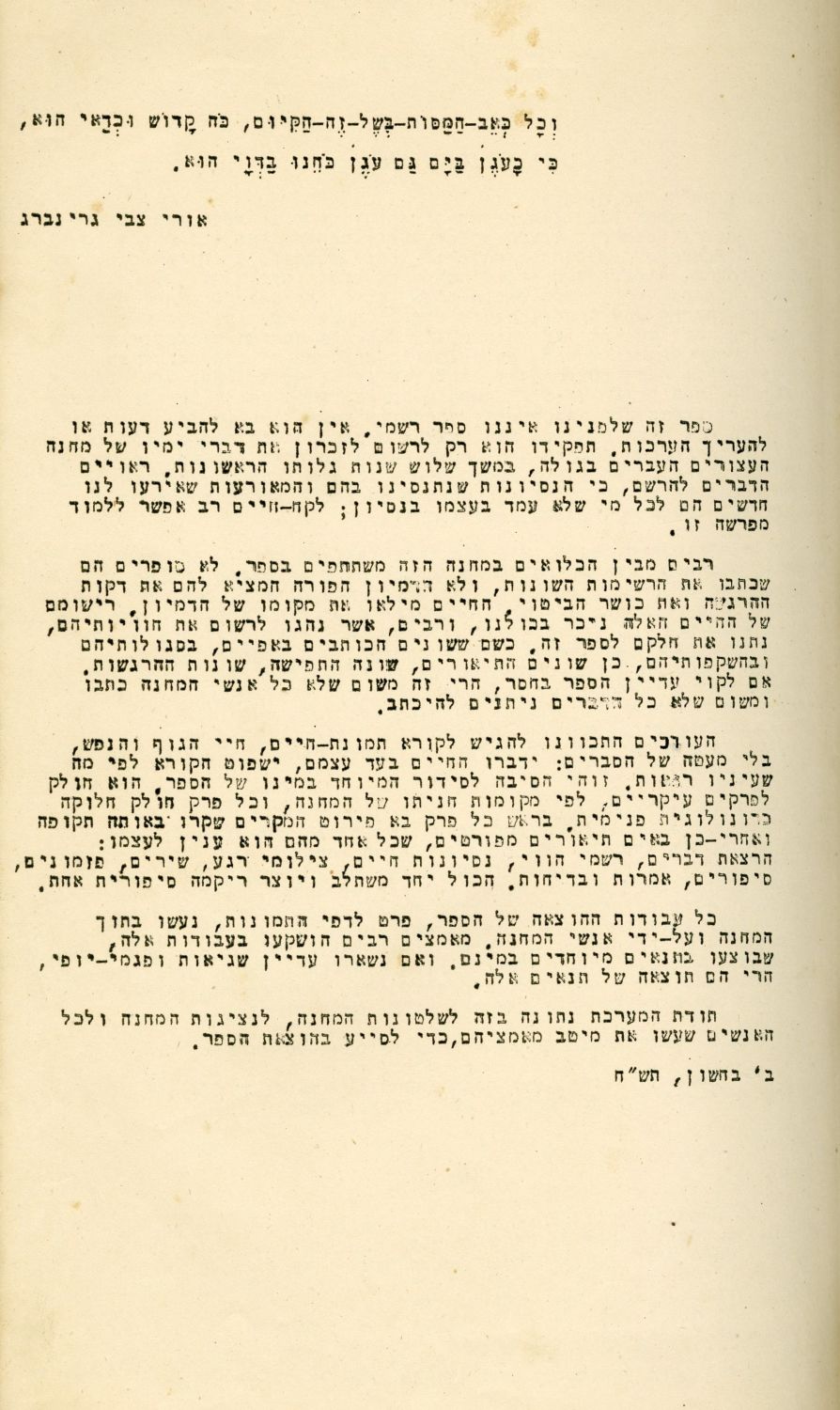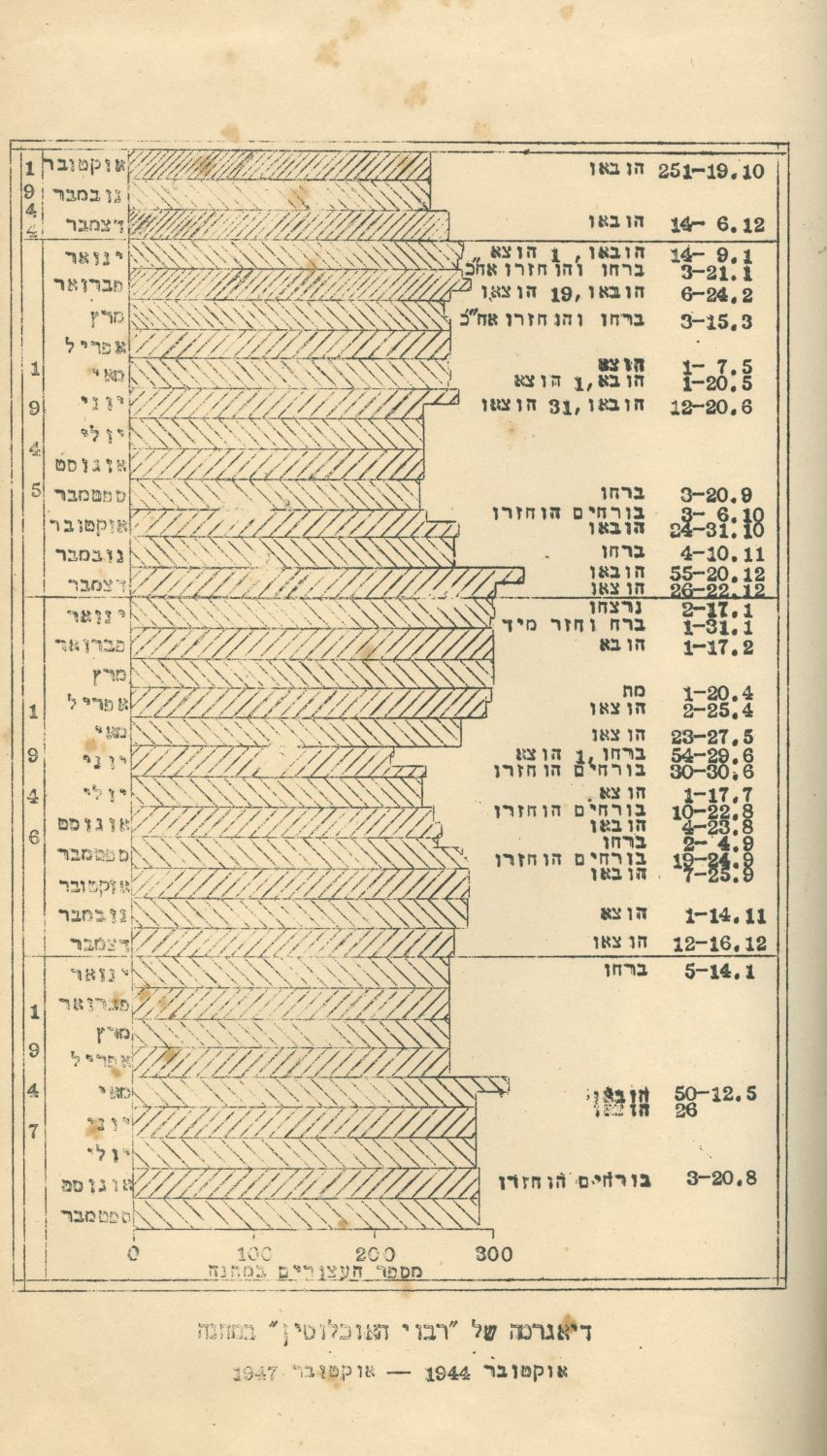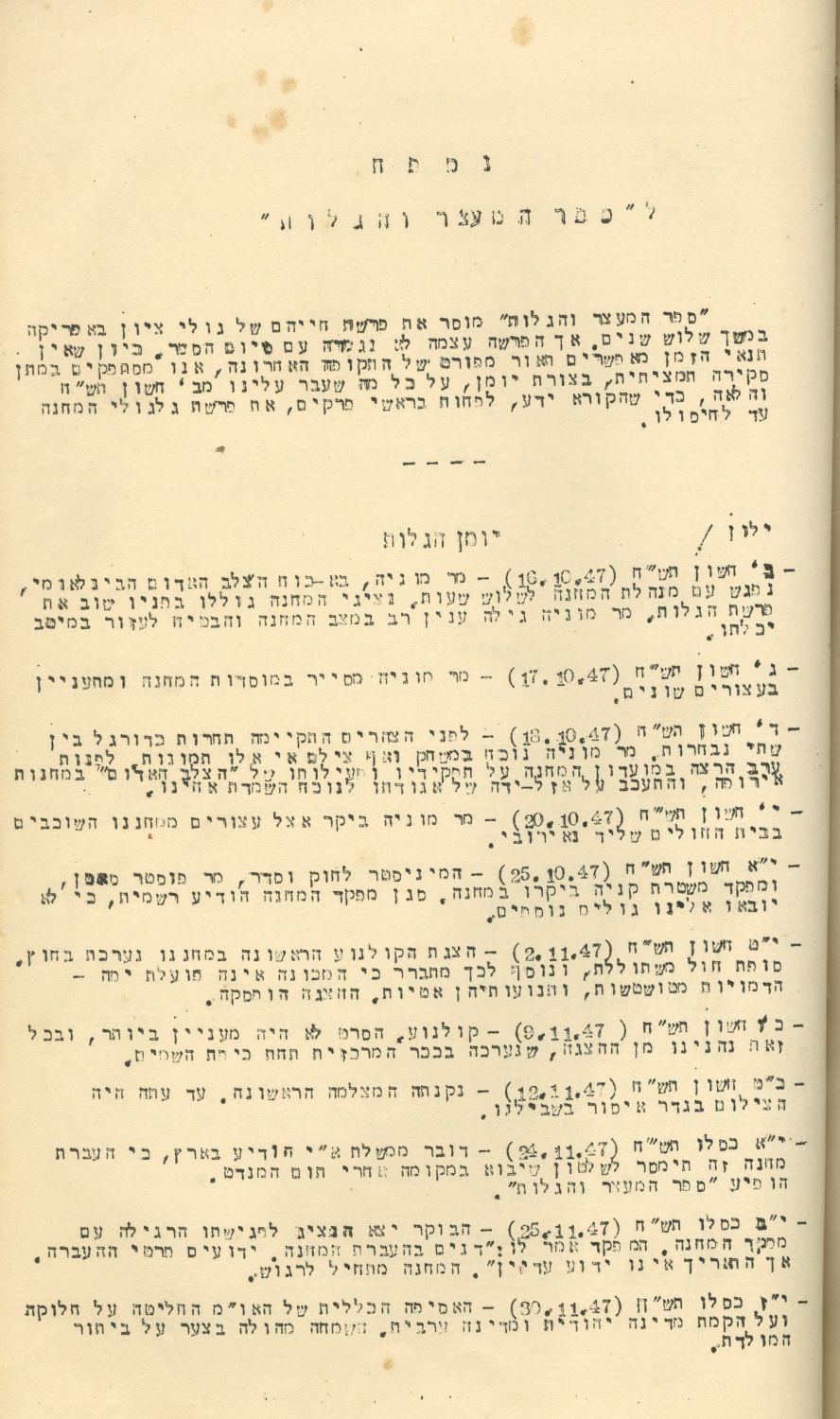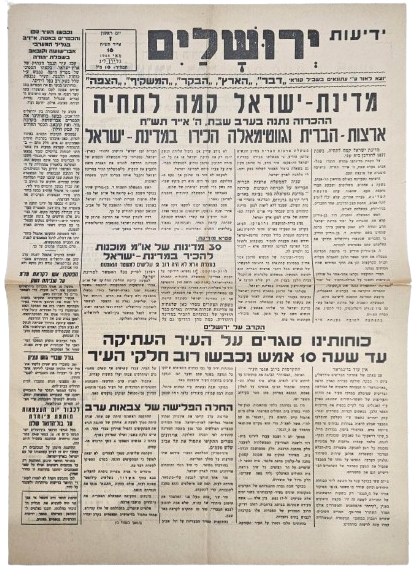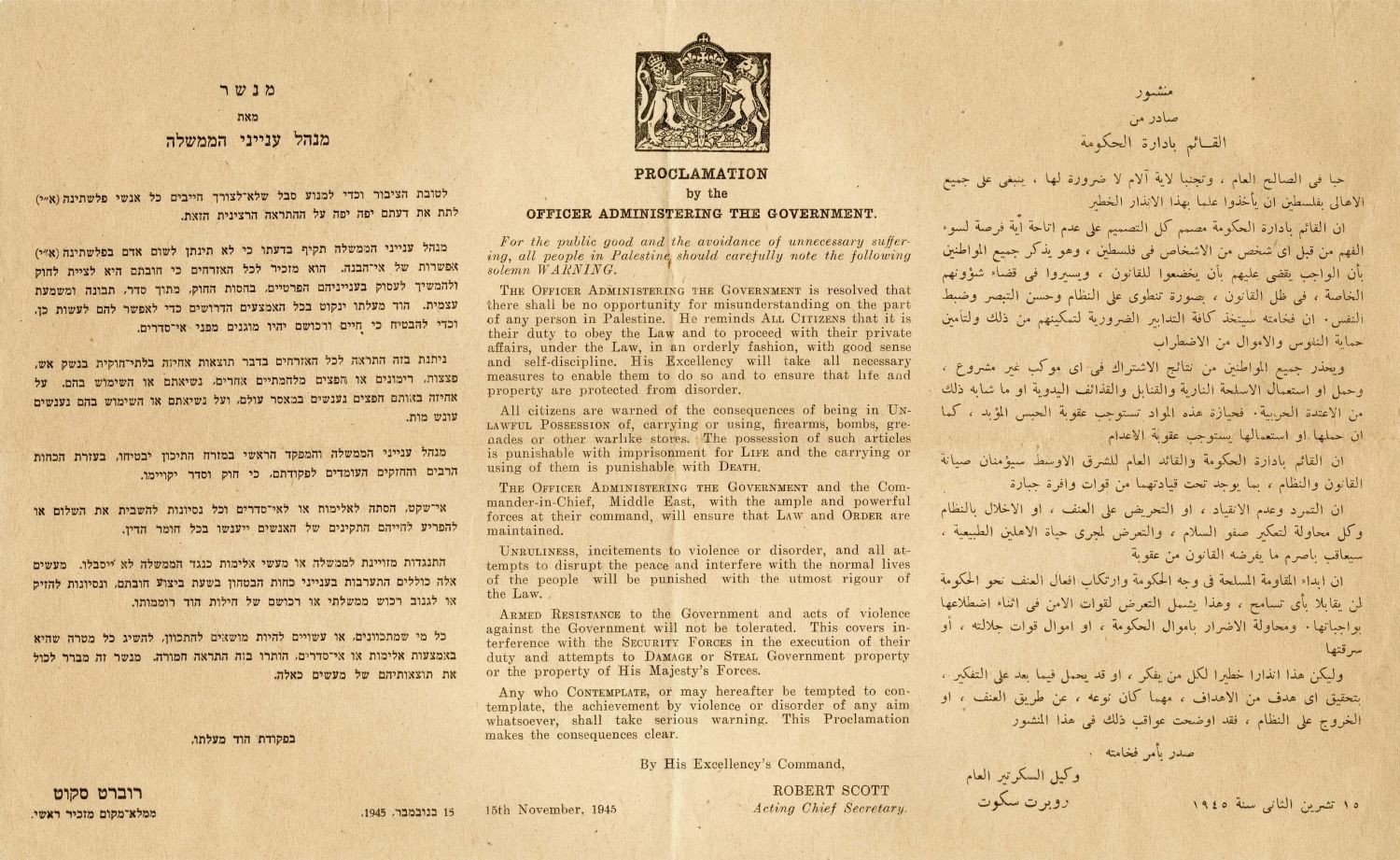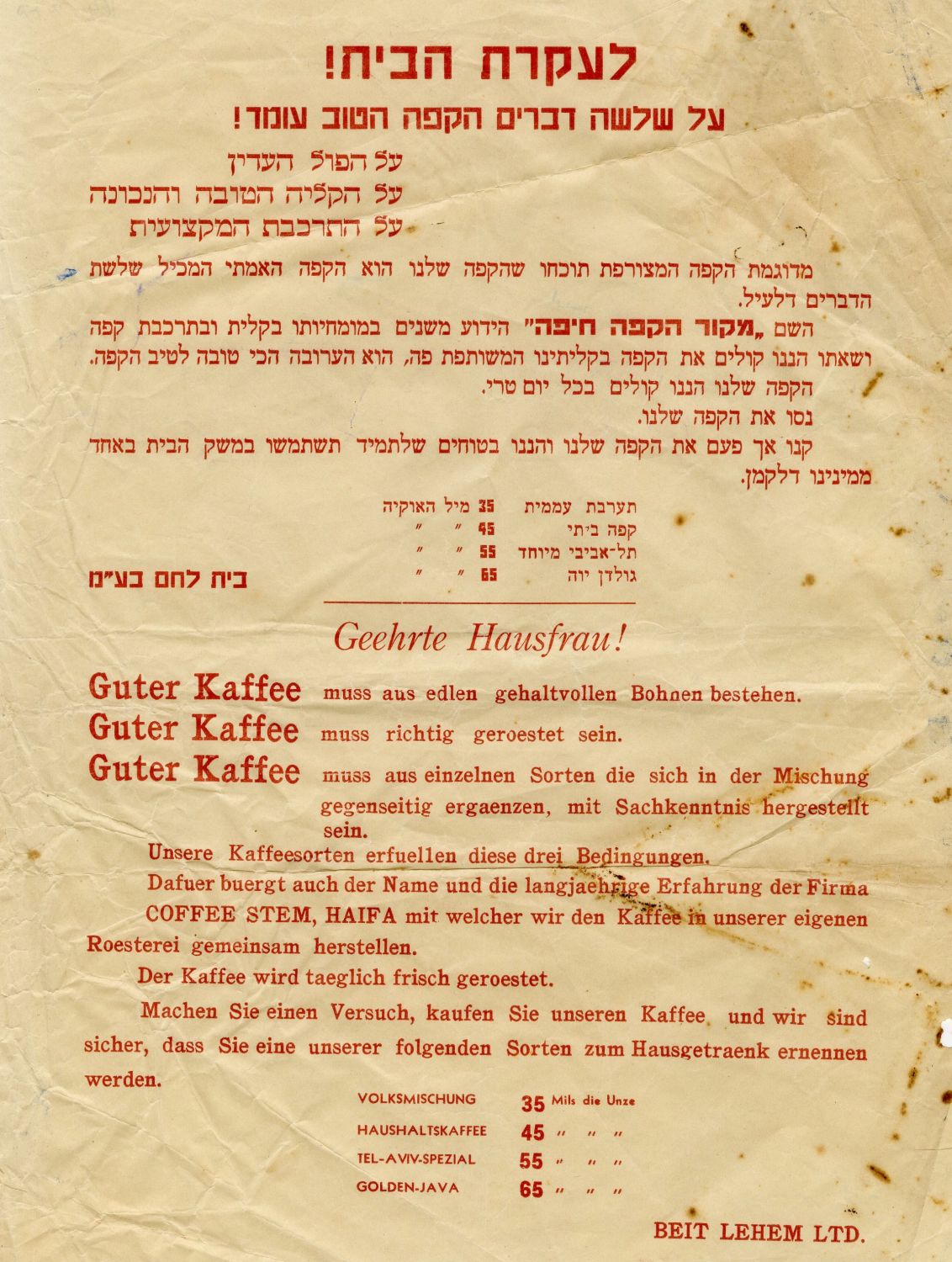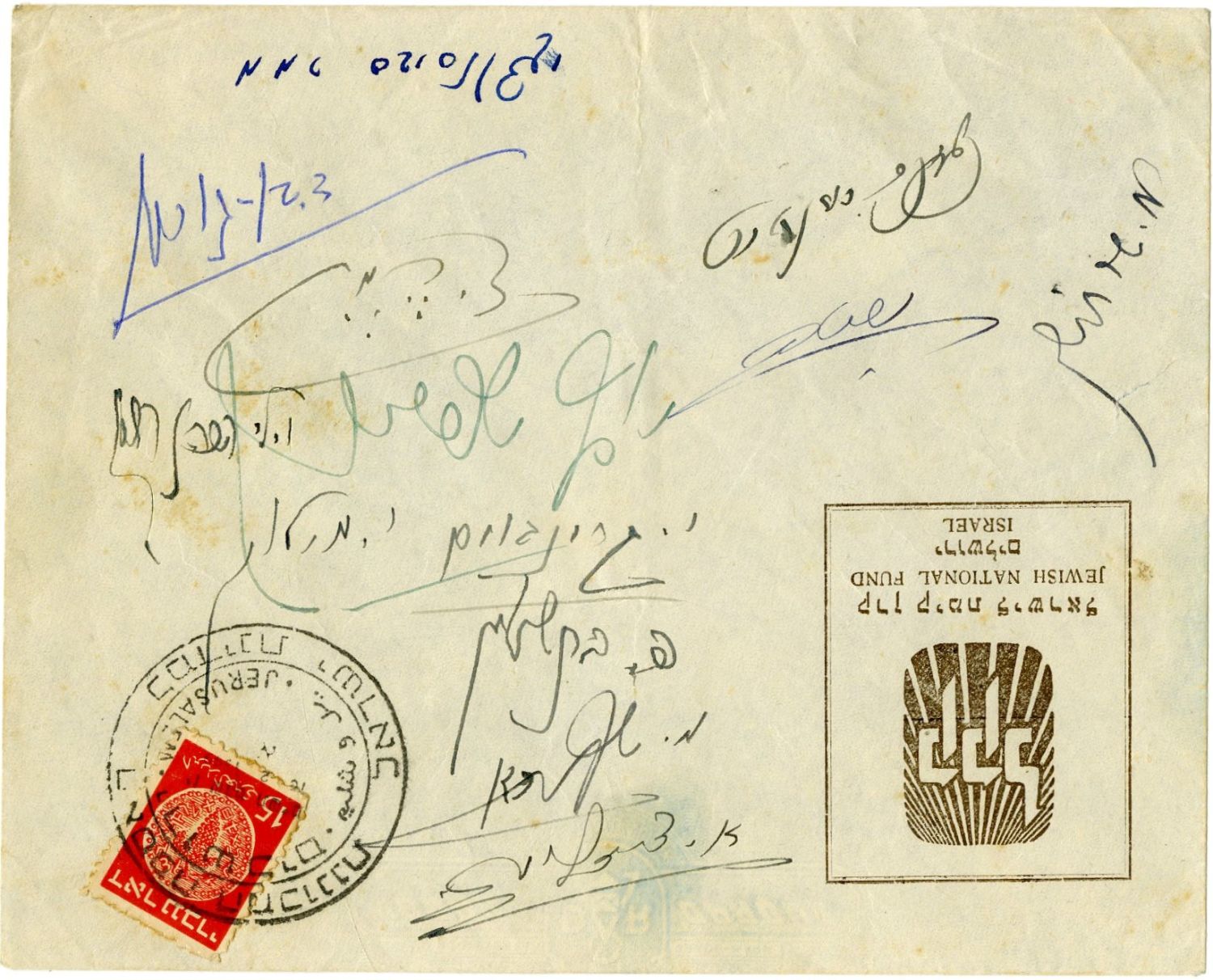The book of arrest and exile (three years of our exile). The Jewish Detainee Camp in Exile, Gilgil, Kenya, October 1947. The most comprehensive and detailed documentation of the lives of the Jewish detainees in the Kenya camps, which was written and published by the detainees themselves during their stay in the camp, and consists of dozens of articles in many areas that occupied the former fighters who became prisoners, including diagrams, historical photographs, maps, tables, etc. Copy with the rare appendix on the prisoners' escape data that does not appear in all copies. Stencil print.
Already in the early days of the Sembal camp, the Hebrew detainees began to document the exile into which they were thrown. It is a fact that when the residents of the Gilgil camp in Kenya were asked to contribute "articles, stories, lists and drawings, memories and diary excerpts, letters home and from home, statistical reports, songs, hymns, comments, words of humor, jokes", for a "special booklet" planned by the literary system established in the camp, all 439 residents of the camp contributed texts they wrote. For the "Badad" system, as it called itself, this was the fourth collection that it published during its stay in Africa. Unlike the three limited booklets that preceded the special collection, it announced that: "In this special issue there will be no limit on the number of pages, so that any material worthy of publication will be published and will not be rejected." In the articles written by the detainees and which became to thick book, a record of Jewish life in the camp in all its forms is given. Alongside articles covering the nature of the camp, the feelings of the prisoners, the longing for release and to return to Eretz Israel, and the multitude of issues the detainees dealt with (Including a rare Documentation of the difficult feelings on their way east: "On Seder night, my brother is in German captivity and I am in British captivity, what does mother say?"), the writers were not afraid to document the attempts to escape from the camp while intentionally provoking the British ruler. Almost all of the escape attempts from the three camps where the detainees were held in Africa (there were nine escape attempts in total, with the last one being driven and planned while working on the book) are documented in great detail. In the appendix at the end of the book under the title "Diagram of the population increase in the camp", there is a diagram detailing the number of escapees as well as the exact dates of the days they fled the camp, or returned to it. At the time of the publication of the book in November 1947, the British Army could have easily revealed through an interpreter the attempted subversion, but the editors were not at all afraid of this.
Later, David Niv and David Sivan revealed the progress of the work on the book: "The work was conducted very feverishly. The material started flowing immediately... After we obtained a manual duplicating box - a flat wooden box, a grid, a hand roller for applying the paint to each individual page - and we received Credit from the camp fund for the purchase of the paper in Nairobi, we established an estimate of expenses - for 300 pages for 300 copies, 90,000 copies, binding, etc. - 18 Israeli pounds, that is: 600 mil (sixty pennies) per copy. 320 members paid and ordered, and we developed the chain The processes of sorting, editing, printing in a wax press (one dictating, one ticking) - in six shifts of an hour and a half, 9 hours of printing per day - proofreading, correcting errors, duplicating 3 pages at 330 copies per day. The work proceeded at a fast pace, and 80 of the camp's people volunteered for it. After seven weeks, when we caused the details of the journey from Massawa to Mombasa to be copied, the typewriter work was completed, three years after our exile, on Monday in March 1947, on 330 folio pages. At the same time, specialists in the camp assembled a manual press for printing the cover, and covers of Bristol paper and cloth backing were installed."
At the end of the book there is a detailed "exile diary", with a list of dates for all the important events that took place in the camp.
321, [4], 14 leaves + [3] photo plates. 33 cm. Slight wear on the cardboard cover. general condition good.


